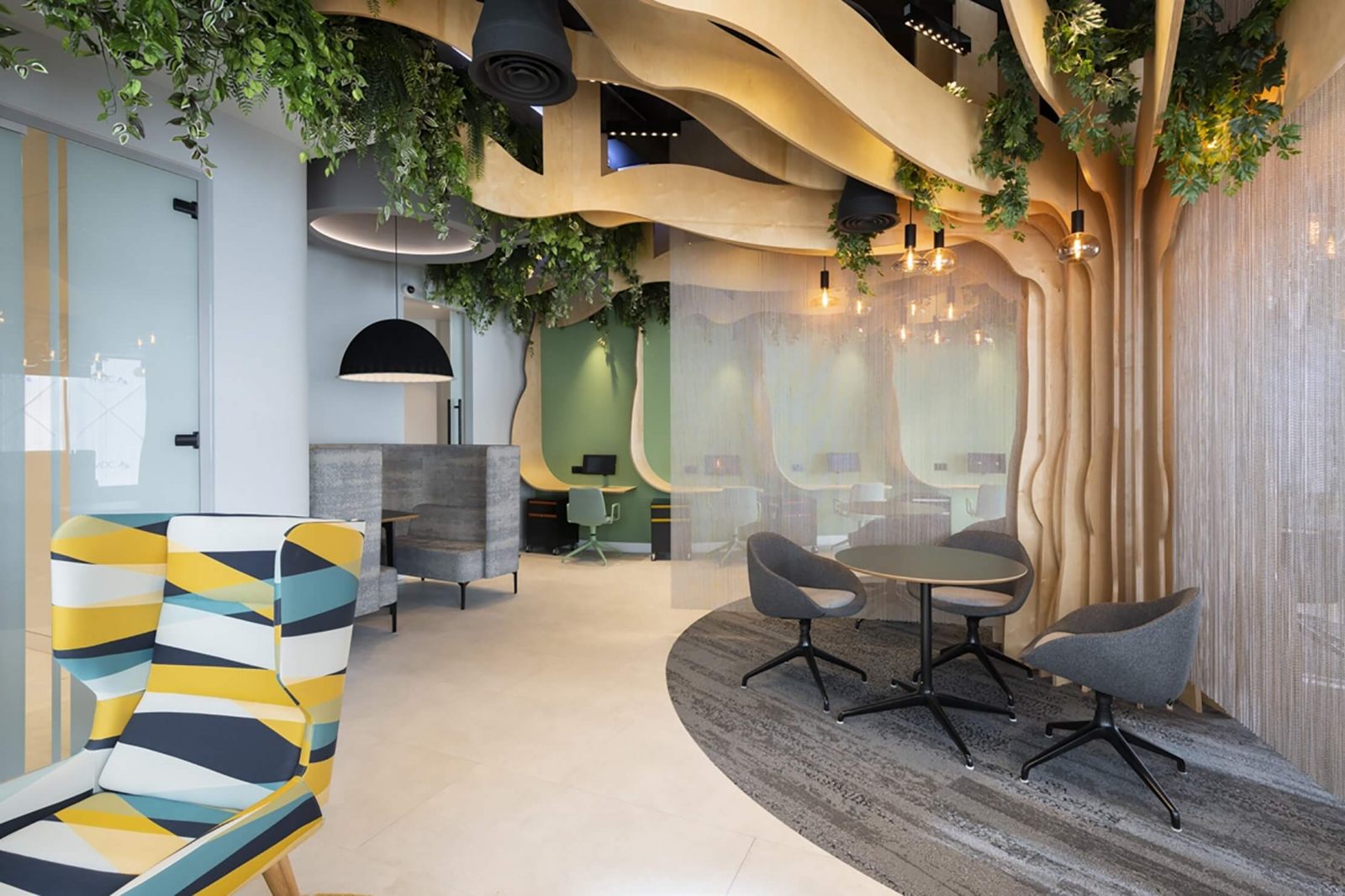How does incorporating nature into design benefit our everyday spaces? Can nature-connected design help us create healthier and more sustainable environments? Let’s explore how this innovative concept is shaping modern living by blending nature with architecture to improve well-being.
Table of Contents
The Essence of Nature-connected Design
Biophilic design focuses on integrating natural elements into our built environments. By introducing natural light, plants, and organic materials into interior spaces, the goal is to reconnect people with the environment. This approach enhances the overall atmosphere, making spaces feel more inviting and tranquil.
For example, adding large windows to maximise natural sunlight or incorporating water features can create a calming ambience. By increasing exposure to components inspired by nature, biophilic principles aim to improve both physical and mental health in many homes and workplaces.
Bringing Nature Indoors
One of the main advantages of this design approach is its ability to bring the outdoors inside. This includes using greenery, natural textures, and water elements to create a soothing environment. By filling spaces with plants and natural features, people experience the serene effects of the garden even when indoors. Research has shown that environments rich in natural elements can reduce stress, improve concentration, and boost creativity. Additionally, natural light and fresh air circulation further enhance the positive impact of this approach.
Key Elements of Nature-connected Style
Several components make up the foundation of eco-friendly architecture. These elements include:
- Natural light: Maximising sunlight with large windows and skylights.
- Greenery: Adding indoor plants or vertical gardens.
- Water features: Using fountains or ponds to create a sense of tranquillity.
- Natural materials: Incorporating wood, stone, or bamboo in furniture and décor.
- Views of nature: Ensuring visibility of outdoor greenery through windows or outdoor spaces.
These elements work together to create environments that nurture both physical and mental well-being. When strategically combined, they form a harmonious connection between nature and design.
Health Benefits of Biophilic Spaces
It has been shown to have numerous health benefits. According to research, being in surroundings that are influenced by nature can improve mood, lower blood pressure, and lessen anxiety. It also boosts productivity and creativity, making it ideal for workplaces and educational spaces.
For example, workers often feel more motivated and concentrated in offices that implement biophilic concepts. The calming effects of greenery and natural light can result in fewer sick days and overall higher job satisfaction. Similarly, in schools, these spaces help students concentrate and stay motivated.
Sustainability and Energy Efficiency
Another key advantage is the promotion of sustainability. Eco-friendly architecture often incorporates energy-efficient solutions like natural ventilation and passive solar heating. Green roofs and living walls add insulation, absorb rainwater, and help manage stormwater. They also filter air and increase the overall oxygen level. This approach reduces the ecological footprint while connecting people to nature.
These designs help save the environment by lowering the need for artificial lighting and heating. Furthermore, compared to synthetic substitutes, natural materials like stone and wood are more environmentally friendly.
Aesthetic Appeal and Functionality
Eco-friendly architecture doesn’t just focus on well-being and sustainability; it also enhances the visual appeal of spaces. The use of natural materials, textures, and colours brings warmth and depth to any room. These organic touches create spaces that feel more welcoming and comfortable.
Features such as these not only serve a decorative purpose but also contribute to a healthier environment overall. Additionally, combining natural materials with modern elements creates a perfect harmony of style and purpose, making the space both beautiful and practical. The careful selection of plants and materials ensures that the space remains low maintenance, adding convenience to its beauty.
Customising Your Space
Adapting eco-friendly architecture to individual spaces requires careful planning. It’s important to evaluate factors such as available natural light, the size of the room, and how the space is used. Professionals often recommend starting with small changes, such as introducing a few indoor plants or opting for furniture made from natural materials.
For those seeking a more immersive experience, larger transformations like creating a green roof or installing a water feature can bring significant benefits. The key is to strike a balance between natural elements and functional style to suit the needs of each space. Incorporating energy-efficient lighting and sustainable materials also helps reduce the environmental footprint while enhancing the aesthetic. Personalising the design with thoughtful details, like natural stone or wooden accents, further elevates the space’s overall charm.
Biophilic design brings nature and architecture together. It creates spaces that promote health, sustainability, and beauty. Whether used in homes, offices, or public spaces, this approach has transformative effects, enriching our daily lives. Incorporating natural elements into the built environment offers a way to reconnect with earth and improve overall well-being.
